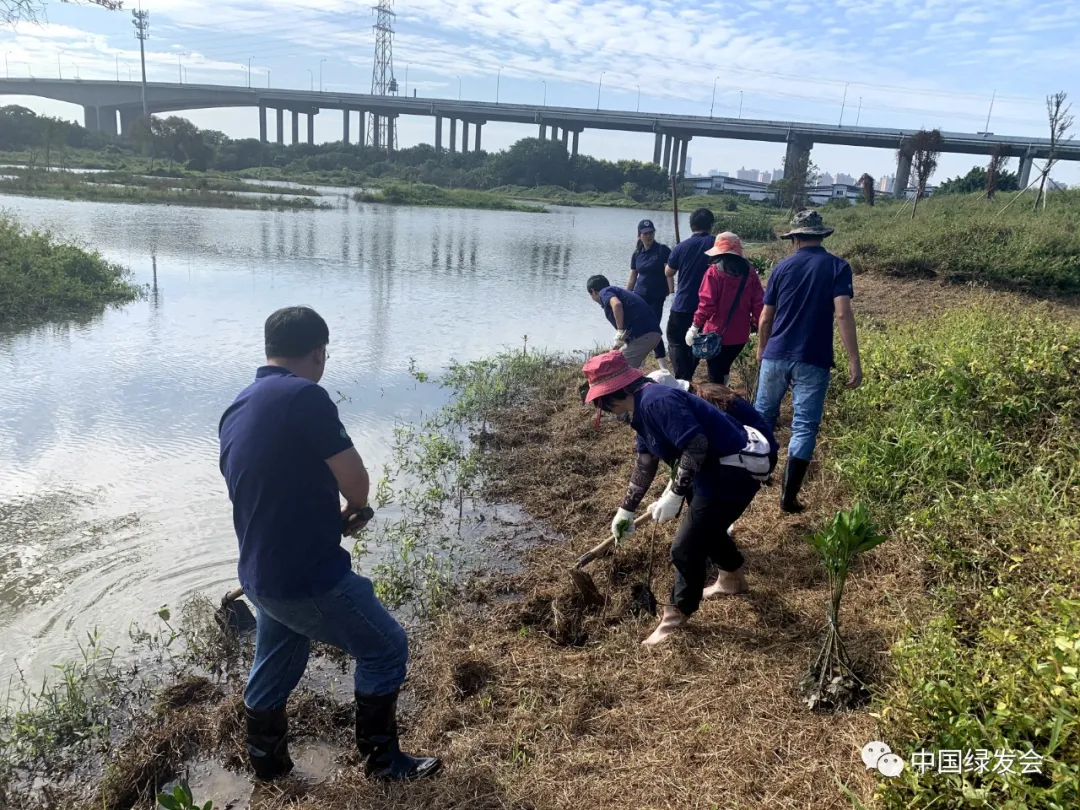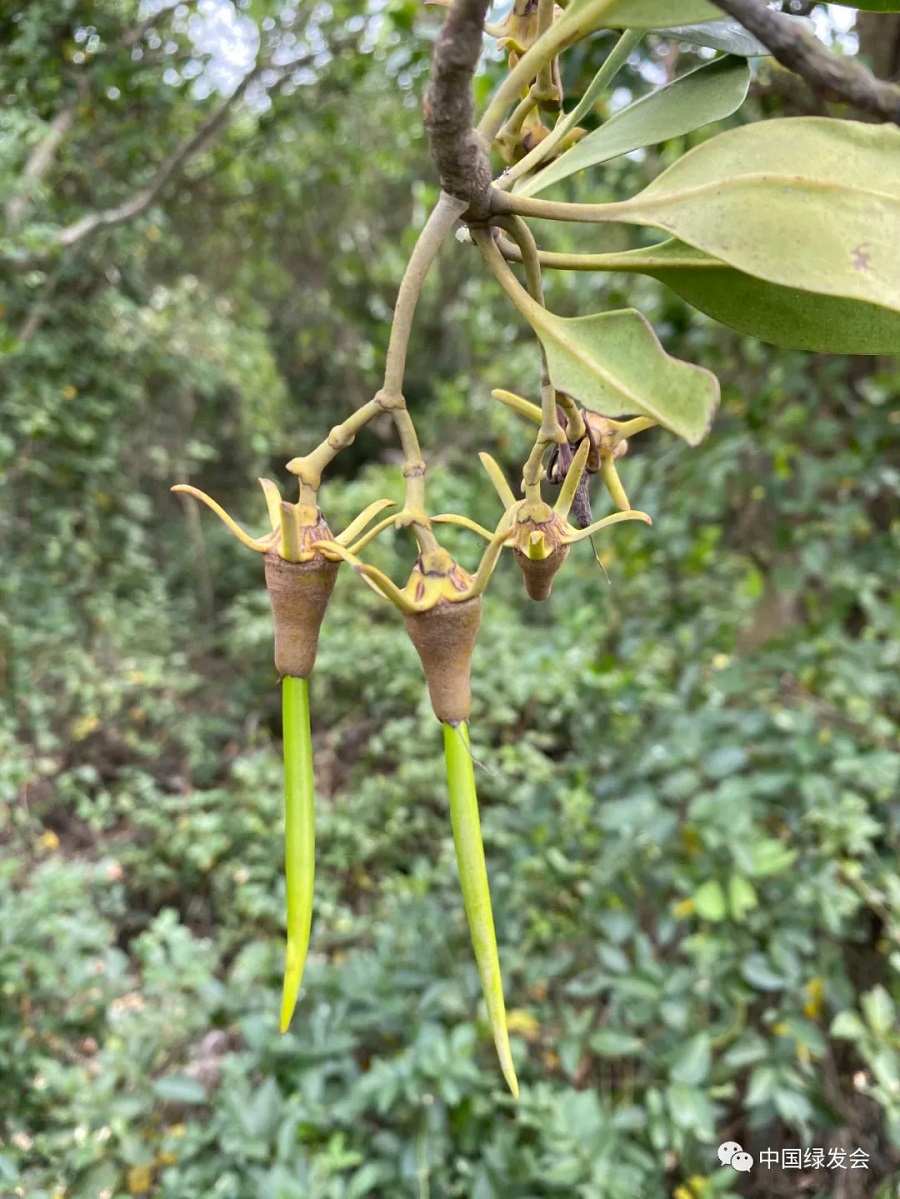Mangrove is a community of unique evergreen shrubs and small trees that grows on tropical and subtropical bays or mudflats in estuaries. It is a very important ecosystem at the junction of ocean and land. Because it has the functions of preventing wind and waves, promoting siltation and beach protection, and protecting the shoreline, as well as providing sufficient activities and foraging places for offshore or estuary organisms, it is hailed as the "coast guard" and "coastal delivery bed".
On November 10-11, under the entrustment of a group of fans of Xu Minghao, the Chinese singer and songwriter, the volunteers of China Biodiversity Conservation and Green Development Foundation (CBDGDF) in Guangzhou, against the big sun on the banks of the Pearl River in the Haizhu Wetland, planted a total of 300 Kandelia candle seedlings. When Xu Minghao's fans donated to CBCGDF, they said that their donations will be used to protect mangroves. The volunteers are very careful. Before planting the seedlings, they have cleared away a large number of weeds near the water bank to prevent the seedlings from being threatened; After planting, they patiently watered each seedling.
"The most worrying thing about the growth of seedlings is that they are entangled and climbed by exotic plants on the waterfront, so must first clean them up," said the scientific researcher responsible for this tree planting operation. Kandelia candel is a common tree species in mangroves. Its fruiting period is between August and April of the following year. This season is in southern China, which happens to be its ripening period. Because they are viviparous seedlings, these fruits can often grow immediately after being inserted into the tidal flat. In order to ensure the survival rate of seedlings, in addition to cleaning up weeds in advance, the seedlings used in this planting are basically seedlings that have been cultivated for more than a year, so that after planting, their survival rate can be guaranteed to a greater extent.
Guangzhou Haizhu National Wetland Park, covering an area of 1,100 hectares, is the largest national wetland park in the central area of a megacity in the country, and it is a veritable "green heart" in Guangzhou. Its wetland water source mainly comes from the currents formed by the tidal fluctuations of the Pearl River system and the confluence of salt and fresh water. Its river water discharges and can be directly connected to the South China Sea through the Shiziyang Channel. Supported by the sea, the water of the Pearl River in this area has relatively high salinity, and its intertidal zone has historically been the distribution area of mangroves.
It is reported that in recent years, as the conservation of mangroves in various parts of China has increased significantly, as of June 2020, the distribution area of mangroves in the country has been restored to 29,000 hectares.






(Photo credit: CBCGDF volunteers)
Original Chinese article:
http://www.cbcgdf.org/NewsShow/4854/14399.html
By / Maggie
https://www.paypal.me/CBCGDFChina
http://www.cbcgdf.org/English/ConfirmDonaTion/0.html


(Please indicate "I read CBCGDF" in the payment notes, thank you!)
